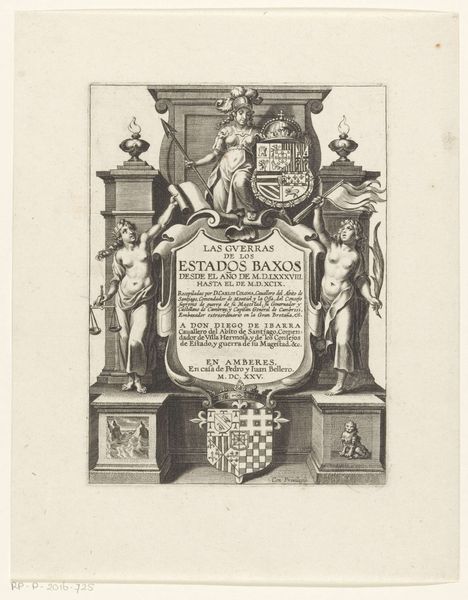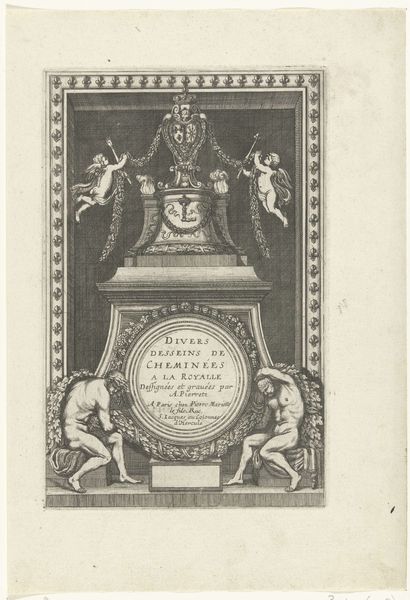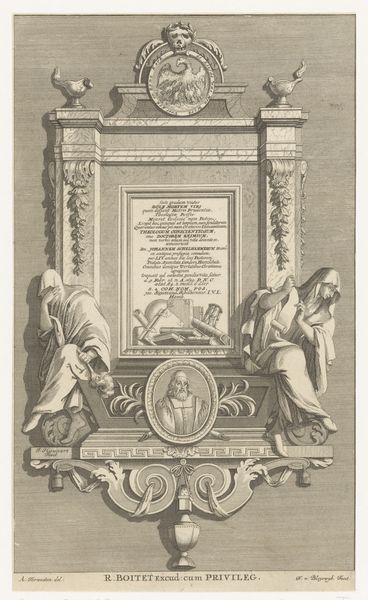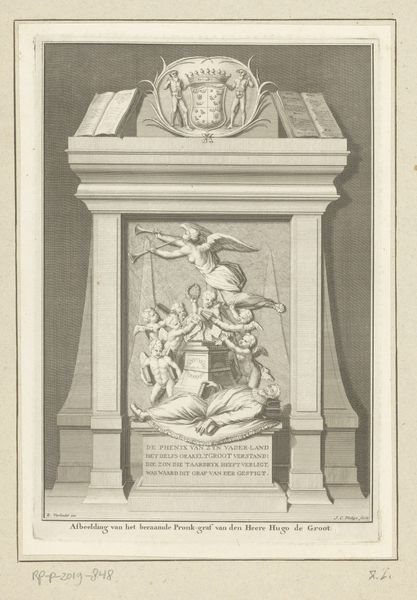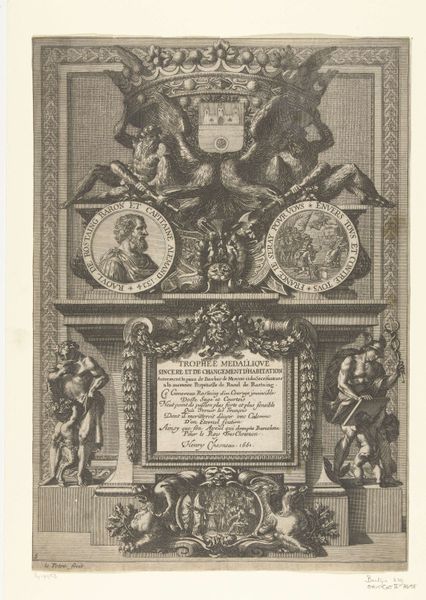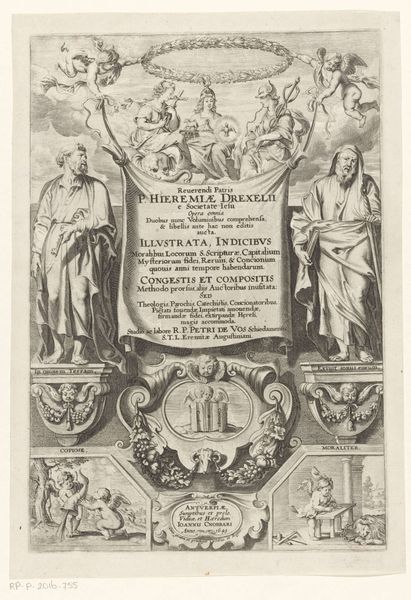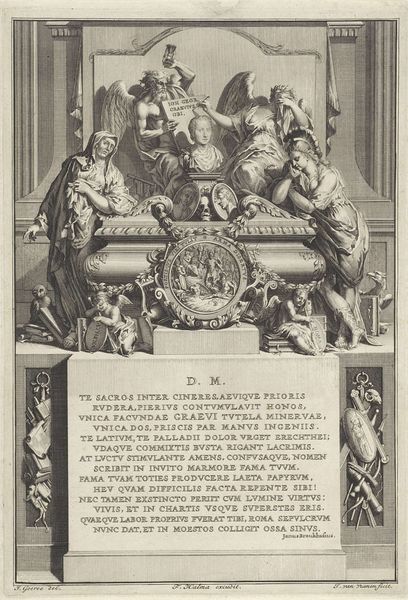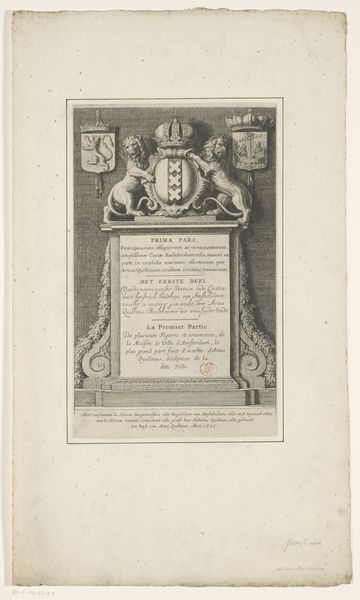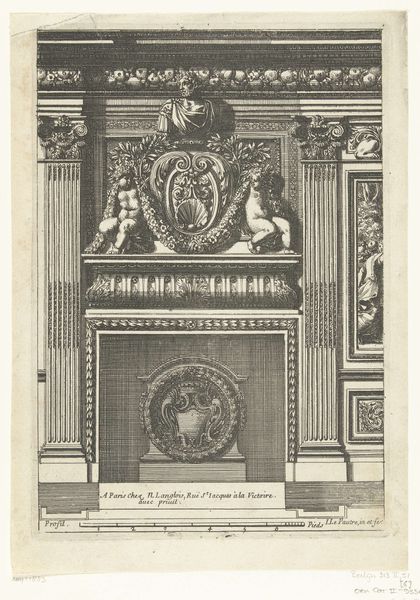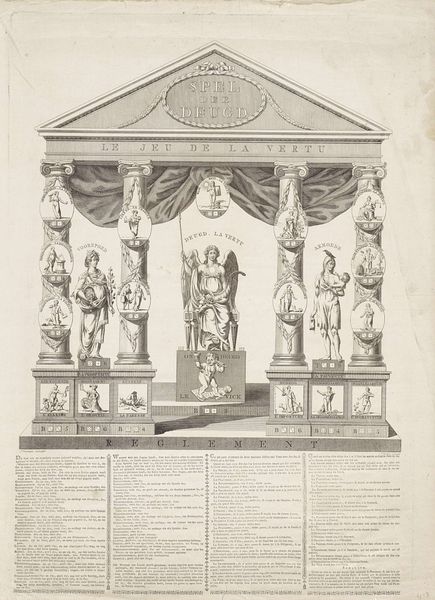
Memorieprent met het echtpaar Marie de Raet en Philippe le Roy after 1662
0:00
0:00
print, engraving
#
portrait
#
baroque
# print
#
figuration
#
line
#
history-painting
#
engraving
Dimensions: height 386 mm, width 256 mm
Copyright: Rijks Museum: Open Domain
Curator: Let's discuss this fascinating memorial print titled "Memorieprent met het echtpaar Marie de Raet en Philippe le Roy," created after 1662. It's currently housed in the Rijksmuseum and attributed to Richard Collin. Editor: Oh, wow. My first impression is one of solemn grandeur—a bit like stumbling upon a monument that breathes with historical significance. But also, oddly cozy? Is that weird to say? Curator: Not at all. I see it as a careful representation of status and legacy. The portrait depicts Marie de Raet and Philippe le Roy, rendered in the Baroque style, a style which reflected the immense power they yielded. This was a memorial to the life and influence they shared. Editor: The attention to detail in the engraving is stunning! Look at the texture on the fabric, the lifelike quality of the figures—even the dog lounging down there has personality. And all the inscriptions; what language is that? Curator: The inscriptions reflect a multi-lingual society and ruling elite; an appeal to multiple audiences and historical understanding. The Latin and Greek particularly would emphasize their education and class, an understanding of classical texts. Editor: Right, because memory, especially public memory, is never just about remembrance. It's about carefully curating the narrative you want future generations to believe. And who's that up in the corner? Another image behind bars—very meta. Curator: The figures up top highlight how deeply entwined politics and nobility were within families during the period. Marriage was frequently an act of consolidating familial power. Notice too, the guard-like figures down below brandishing flags—the Le Roy flags of commerce and military enterprise. Editor: It makes you think about who gets to be remembered, and how their stories are framed. Power really does have a way of writing itself into history. So the question is, are they trying too hard? Is it compensating for some underlying issue? Curator: Well, that’s the central question when you start digging into portraits as propaganda. They tell you as much about the values of the time as they do the lives of these people. Editor: So true! Looking closer, beyond the surface grandeur, I sense a certain melancholy. All this effort to be remembered makes you wonder about the fear of being forgotten. A monument can never fully capture a person, can it? Curator: Exactly, and it's that tension, that space between the image and the reality, that makes works like these so incredibly rich for understanding how elites reinforce their position across time. Editor: A powerful family—immortalized in ink, yet ultimately human, wrestling with their own mortality and the stories they wanted to leave behind. Heavy.
Comments
No comments
Be the first to comment and join the conversation on the ultimate creative platform.

